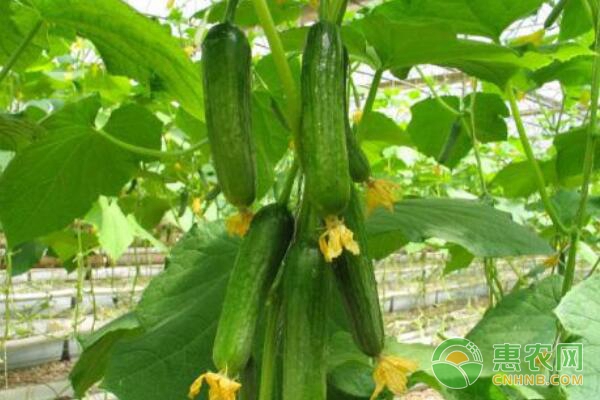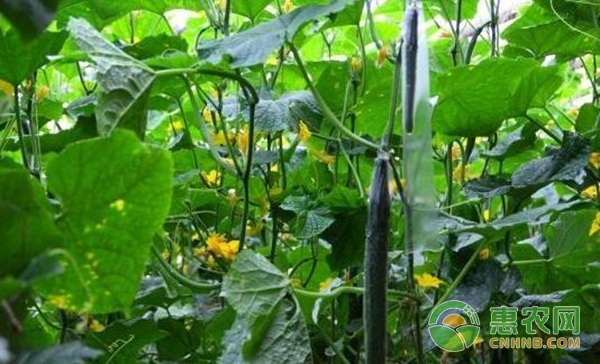An important measure in the greenhouse cultivation process is to look at leaf management. As the name suggests, in the greenhouse cucumber production, the growth and development of cucumber are judged by observing the color and shape of the leaves. The leaf management technology of greenhouse cucumber is a simple and effective method, which is very worthy of promotion in production. So, how do you look at leaf management in greenhouse cucumbers? Now Xiaobian will share the key points of the management of the cucumber in the greenhouse. First, the characteristics of leaves in greenhouses under different conditions 1. When the shed temperature is low and the soil moisture is high: the cucumber leaves are larger, the leaves are swollen, the leaf edges are curled backwards, and the veins are fine and pale. 2. When the shed temperature is high and the soil moisture is high: the cucumber leaves are thin, the leaves are light green, the leaf tips are long and large, the leaves are unevenly stretched and slightly scooped, the petiole is long and drooping, the texture is crisp or longitudinal, and it is easy to break. . 3. When the shed temperature is low and the soil is dry: the cucumber leaves are small, the leaves are dark green, the growth is slow, and the leaves are twisted to one side, which is like a viral disease. 4. When the shed temperature is high and the soil is dry: the cucumber leaves are large, the color is yellowish green and dull, sometimes there is a circle of yellow-green around the leaf margin, and the small tip and the top of the stem do not stretch. 5. When the soil in the shed is excessively fertilized: the upper leaves are small, the leaf margins are inverted, the growth point is not stretched, and the leaves are dark green. 6. When a large amount of unripe organic fertilizer is applied in the shed, causing ammonia poisoning: there is a water-soaked scar between the leaves of the cucumber leaf edge, which is soft first and then dry, and turns grayish green after drying. 7. The air humidity in the shed is too high. When the transpiration of the blade is suppressed: the edge of the blade is hot in the morning, and there are many angular or circular water-immersed spots, and the symptoms gradually disappear in the future. 8. Temperature and humidity control requirements of cucumber in greenhouse: seedling period, daytime temperature is maintained at 22-25 degrees Celsius, night time is 15-18 degrees Celsius, field water holding capacity is 85-90%; flowering and melon period: ventilation, humidity, disease prevention, daytime The temperature is 25-29 degrees, not more than 35 degrees; the night is maintained at 18-22 degrees, the minimum is not lower than 13 degrees, the relative humidity is kept at about 75%, and the anti-fouling aerosol is fumigation. Second, the main points of the leaf management technology of greenhouse cucumber 1. Seedling stage: the tip of the blade hangs down, the color is green or the edge of the cotyledon turns white and curls upwards, which is caused by the sudden cooling in the greenhouse. According to the weather changes, keep warm and cold work early: keep the daytime temperature at 22 °C -25 °C, and keep the night temperature at 15 °C - 18 °C. Pay attention to the humidity in the shed while ensuring the temperature. The yellow tip of the blade is caused by lack of water or excessive water application in the soil, which is caused by physiological water shortage. Water should be properly watered to maintain the soil water holding capacity at 85%-90%. 2. Flowering result period: the leaves are shrunk, the leaves are thicker, the leaves are light yellow and dull, which is caused by the low temperature in the greenhouse. In severe cases, the leaf margin turns white. Insulation should be strengthened to keep the temperature at 25 ° C - 29 ° C during the day and 18 ° C - 22 ° C during the night. The temperature should not be lower than 13 °C to ensure the normal growth and development of the plant. At the same time, it is necessary to cultivate the humic acid potassium fertilizer several times to increase the ground temperature, promote root development and make the plants robust. 3. Cucumber buds in the early stage: the leaves are curled upwards and the leaves are light yellow, which is caused by excessive temperature in the shed and excessive air humidity. It should be ventilated, dehumidified and disease-proof in time, increase the amount of irrigation, keep the temperature below 35 °C, and keep the humidity at around 75%. If the blade becomes larger and thinner, the internode lengthens, mostly caused by high temperature, high humidity and low light in the shed. In addition to ventilation and dehumidification, a reflective curtain can be hung on the rear wall of the greenhouse to increase the light intensity in the shed, especially at the rear. 4. After a continuous cloudy day, it suddenly clears up, and the leaves of the plant suddenly lose water and wilting. This is due to the sudden opening of the straw curtain, the photosynthesis is intensified, and the water supply is insufficient. The method of pulling the curtain can be taken when the curtain is placed. That is to say, one bed is pulled one bed, so that the plants in the shed will not cause discomfort due to the sharp environmental changes. After the plants adapt to the climate, they are completely opened to prevent their loss of water and wilting. 5. The water droplets are hung on the edge of the cucumber leaves in the early morning. This phenomenon is physiologically called “spitting waterâ€, which is a normal phenomenon. However, since the disease is prone to epidemics at this time, it should be promptly applied to prevent diseases. Can be released in time or use 5% chlorothalonil aerosol for greenhouse fumigation, can play a variety of effects such as dehumidification, disease prevention, treatment.
Peptides Powder is also called Nano Oligopeptide Collagen (OCO, Nano active Oligopeptide Collagen, or Nano Collagen for short), also known as Oligopeptide, micro peptide, short peptide. Small peptides generally refer to oligopeptides composed of 2-3 amino acids, with an average molecular weight of about 300 daltons. The final products of protein (collagen) digestion in the digestive tract are usually small peptides rather than free amino acids. Small peptides can be completely absorbed and enter the blood circulation in the form of two or three peptides. Small peptides play an important role in protein nutrition.
peptides powder buy,peptide powder benefits,peptides powder for sale,peptides powder for bodybuilding Shaanxi YXchuang Biotechnology Co., Ltd , https://www.peptide-nootropics.com
